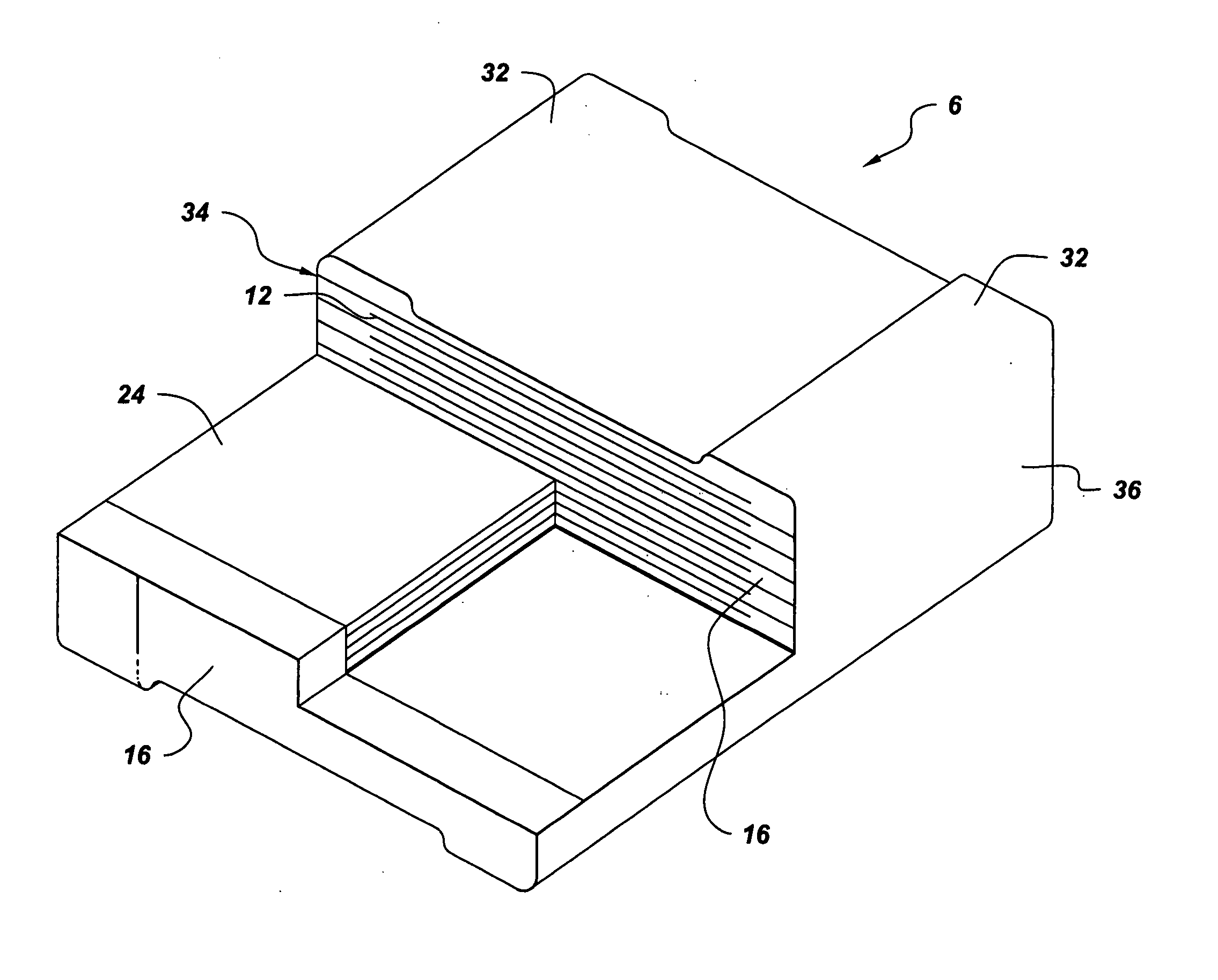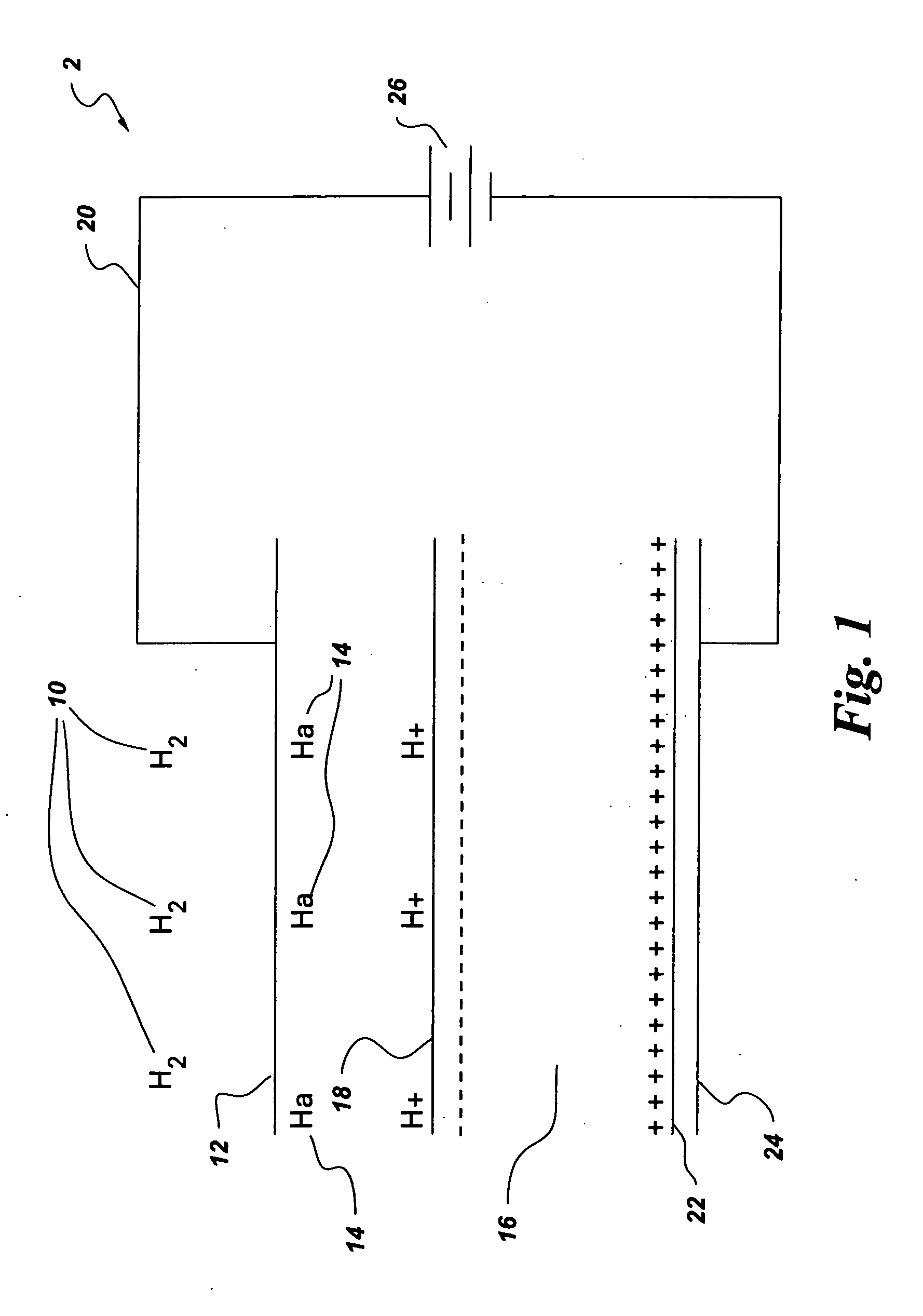System and method for storing hydrogen and electrical energy
a hydrogen and electrical energy technology, applied in the field of field-assisted hybrid hydrogen storage system, can solve the problems of difficult transportation and storage of hydrogen than other liquid fuels, and the difficulty of using liquid or gaseous hydrogen as the energy source in a fuel cell,
- Summary
- Abstract
- Description
- Claims
- Application Information
AI Technical Summary
Problems solved by technology
Method used
Image
Examples
Embodiment Construction
[0017]FIG. 1 schematically illustrates an exemplary hybrid capacitive storage system 2 for storing hydrogen and electrical energy. The hybrid capacitive system comprises a first dielectric layer 16 comprising a dielectric material. The dielectric layer 16 is comprised of a first surface 18 and a second surface 22. At least one catalytic electrode layer 12 is disposed on at least a portion of the first surface 18 of the first dielectric layer 16. The catalytic electrode layer 12 is electrically connected to a second electrode layer 24, which electrode layer 24 is disposed on at least a portion of the second surface 22 of the dielectric layer 16. An electrical connection 20 connects the first catalytic electrode layer 12 and the second electrode layer 24. The hybrid capacitive storage system 2 further comprises a field 26 that may be applied between the first catalytic electrode layer 12 and the second electrode layer 24.
[0018] Molecular hydrogen 10 is introduced to the catalytic ele...
PUM
 Login to View More
Login to View More Abstract
Description
Claims
Application Information
 Login to View More
Login to View More - R&D
- Intellectual Property
- Life Sciences
- Materials
- Tech Scout
- Unparalleled Data Quality
- Higher Quality Content
- 60% Fewer Hallucinations
Browse by: Latest US Patents, China's latest patents, Technical Efficacy Thesaurus, Application Domain, Technology Topic, Popular Technical Reports.
© 2025 PatSnap. All rights reserved.Legal|Privacy policy|Modern Slavery Act Transparency Statement|Sitemap|About US| Contact US: help@patsnap.com



